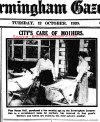jennyann
Gone but not forgotten. R.I.P.
Hi Gel: There is some information on this site where you can apply for certain information: https://www.birmingham.gov.uk/cs/Sa...760&pagename=BCC/Common/Wrapper/InlineWrapper
Looking at the Bowling Green in Pype Hayes Park c1970, I could see the air raid shelter in the background and also in the recent aerial view. It has however been removed as the following photos show ...The Bowling Green Pype Hayes Park in 1970 and a recent aerial view.

An aerial view before the air raid shelter was removed.
View attachment 111313


There is no tunnel to the Bagot Arms it was a myth handed down through the centuries.I have mixed feelings about the demise of Pype Hayes Hall; on one hand I would glady demolish myself because it represents a traumatic period in my life when I lived there as a child in care - However, on the other I loved the beautiful house, the out buildings, the parque floors, the grounds, gardens and putting green opposite. I recall playing cricket, watching American baseball teams play, my time at Paget Road School and some amazing walks / outdoor adventures. Last but certainly not least; I still mourn for the loss of all my schoolmates who I never saw again after I left there in the summer of 1963. There was a rumour that there was an underground tunnel that connected the house with the Bagot Arms - any possible truth in that? Anyway, I hope the house remains.

Excuse me i was one of those kids who resided there and i was not a difficult child, infact i was bullied alot dailyi also worked at pype hayes hall between 1985 - 1995 when it was a childrens home (for difficult teenagers). it is now not a residential home but still in use for young offenders etc and offices for social services dealing with the teenagers.
I remember a David Ullah from Paget Rd school in the late sixties mainly because he was a great footballer. He used to run rings around our PE teacher ( Jones? ) when playing five a side in the gym. The boys all thought he'd have a career playing footy as he was that good.This is a long shot but my Dad and his siblings (Ullah Family) were in this home in the late 50s and 60s. Kenny Richards who commented back in 2011 on this thread mentioned them. Trying to make contact with anyone that was in the home during that period of time.
Oh wow! Yes that’s my Uncle Dave! He is a mad Villa fan still xI remember a David Ullah from Paget Rd school in the late sixties mainly because he was a great footballer. He used to run rings around our PE teacher ( Jones? ) when playing five a side in the gym. The boys all thought he'd have a career playing footy as he was that good.
Did your Uncle Dave used to work for Dunlop in the IT department?Oh wow! Yes that’s my Uncle Dave! He is a mad Villa fan still x
Are you Roy's Daughter?This is a long shot but my Dad and his siblings (Ullah Family) were in this home in the late 50s and 60s. Kenny Richards who commented back in 2011 on this thread mentioned them. Trying to make contact with anyone that was in the home during that period of time.
Oh I see. Roy went to Italy didn't he to open a restaurant. David I think still lives in Wylde Green.Hi, no I am Roy’s niece. Micheal is my Dad (who posted a pic of himself on the donkey above).

